Table of Contents
Leather chairs are a timeless addition to any home, offering both comfort and elegance. To keep them looking their best, regular cleaning is essential.
Maintaining your leather chairs is important for prolonging their lifespan, preserving their aesthetic appeal, and preventing unpleasant odors.
Find a comprehensive list of necessary tools, a step-by-step cleaning guide, and tips for ongoing maintenance.
Learn how to clean your leather sofa & chairs effectively!
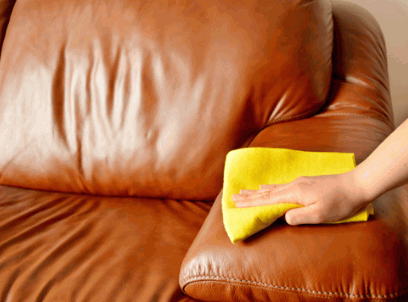
Cleaning leather chairs is crucial for several reasons, including prolonging the lifespan of your furniture and maintaining its luxurious aesthetic appeal. Leather, whether it’s genuine leather or a designer piece, requires a regular cleaning routine to prevent dirt accumulation and preserve its natural comfort. Not only does this practice enhance the appearance of your sofa, but it also contributes to better health by preventing unpleasant odors and potential damage. Therefore, understanding the importance of cleaning and caring for leather chairs can keep them looking and feeling like new for years to come.
Regular cleaning of your leather chair is essential in prolonging its lifespan and ensuring it remains in excellent condition for years to come.
By establishing a routine that incorporates simple yet effective cleaning practices, one can protect the leather from potential damage caused by dirt, oils, and everyday wear. This proactive approach not only preserves the natural beauty of the material but also enhances its overall restoration.
Maintaining a consistent cleaning schedule can prevent long-term issues such as cracking and premature aging, ensuring that every surface remains supple.
Here are some essential care tips:
Maintaining the aesthetic appeal of leather furniture is vital for preserving its luxurious look and feel, especially in a home setting, where it serves as both a functional piece and a focal point that can enhance the overall decor.
To achieve this, it is important to regularly clean and protect leather surfaces. Dust, stains, and other impurities can not only detract from the leather's inherent beauty but can also lead to long-term damage if left unattended.
Here are a few key points to consider:
By safeguarding leather against adverse elements, one not only enhances its beauty but also ensures it remains a comfortable, inviting seating option in any room.

One of the key benefits of regularly cleaning leather chairs is its role in preventing unpleasant odors that can develop over time due to dirt and moisture accumulation, which can not only affect the leather's appearance but also create an unhealthy environment for those using the space.
Maintaining leather requires a routine approach that emphasizes both cleanliness and care. A buildup of grime can attract bacteria, leading to potential health risks and an unpleasant atmosphere.
To ensure the longevity of leather, individuals should adopt regular practices that include:
Incorporating conditioning products enhances the leather's natural oils, safeguarding against cracking while also providing a protective barrier against moisture. It's essential to understand that this proactive maintenance not only preserves the aesthetic of the leather but also promotes a healthier living environment.
To clean a leather chair effectively, it is essential to gather the right tools and supplies, including a microfiber cloth, a quality leather cleaner, water, and a vacuum cleaner for thorough cleaning.
Learn more: Can You Clean With Baking Powder
A soft cloth, preferably a microfiber cloth, is a crucial tool in the cleaning process of leather furniture, ensuring that the surface is not scratched while effectively removing dust and dirt.
Utilizing such a cloth allows for an efficient cleaning without the risk of damage, making it an essential part of your cleaning toolkit.
Leather surfaces are particularly sensitive, and using a harsh material can lead to scratches or discoloration.
To properly apply the cloth, dampen it slightly with a recommended leather cleaner or a mild soapy solution, and gently wipe the surface in circular motions. This technique not only lifts away stubborn grime but also preserves the integrity of the leather's finish.
When selecting a cloth, opt for one that is lint-free and non-abrasive to safeguard your furniture's appearance. Remember to avoid excess water as it can lead to mildew or damage.
Regular maintenance with a soft cloth will keep your leather looking luxurious and extend its lifespan.
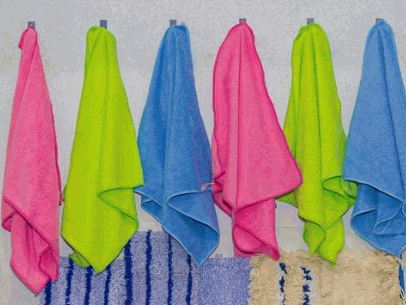
Using a specialized leather cleaner or natural soap is essential for effectively cleaning leather furniture without causing damage.
In the world of leather care, choosing the right products can significantly impact the longevity and appearance of your cherished items. From saddle soap, which is a time-honored natural option, to commercially available leather conditioners and cleaners, each type serves a specific purpose in maintaining the material's integrity.
For instance, saddle soap not only cleans but also nourishes the leather, helping to prevent cracking and fading. When selecting a cleaner, it’s essential to consider the leather type—whether it’s aniline, suede, or protected leather—and to test any product on a small, inconspicuous area first.
By following these simple tips, one can ensure that leather furniture remains vibrant and well-maintained for years to come.
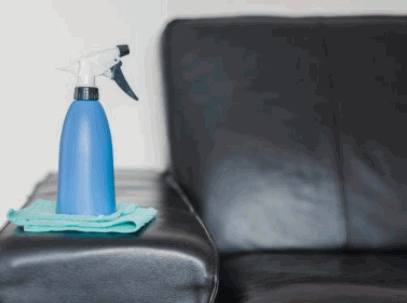
Leather conditioner is a vital product for ensuring that leather furniture remains moisturized, preventing cracking and damage over time.
This essential product serves as a protective barrier, nourishing the delicate fibers and maintaining their supple feel. For genuine leather, a regular conditioning routine not only enhances its appearance by restoring natural luster but also extends its lifespan significantly.
Here are some practical tips for effectively applying leather conditioner:
By incorporating leather conditioner into your maintenance routine, you ensure your leather remains both beautiful and protected.
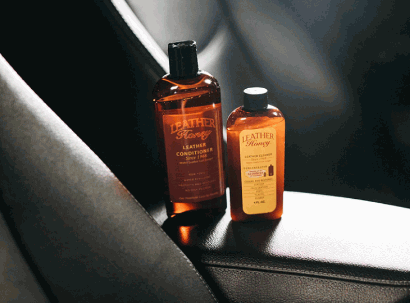
Water is often used in the cleaning process of leather furniture, but it should be applied sparingly and carefully to avoid excess moisture.
Maintaining the integrity of leather products requires knowledge and care, particularly when it comes to water-cleaning methods. Applying water too liberally can lead to a host of issues, including unsightly stains, weakened fibers, and detrimental texture changes.
It’s best to use a soft, damp cloth—damp rather than wet—to gently wipe the surface. To facilitate this, soak the cloth in water, allowing it to absorb moisture, then wring it out thoroughly until only a slight dampness remains.
Remember to:
By following these guidelines, one can enhance the longevity and appearance of their leather furniture, safeguarding against potential damage from improper cleaning practices.

A vacuum cleaner is an essential tool for cleaning leather chairs, as it effectively removes dust and dirt from the surface and crevices, ensuring that these elegant pieces of furniture remain in excellent condition over time. Maintaining leather is crucial for preserving its natural beauty and preventing wear, and using a vacuum can simplify the cleaning process. Adopting proper techniques will not only enhance the effectiveness of the cleaning but also help avoid any potential damage to the leather material itself.
To safely use a vacuum cleaner on leather furniture, consider the following best practices:
By integrating these methods, not only does one maintain cleanliness, but the lifespan of the leather furniture is also significantly extended.
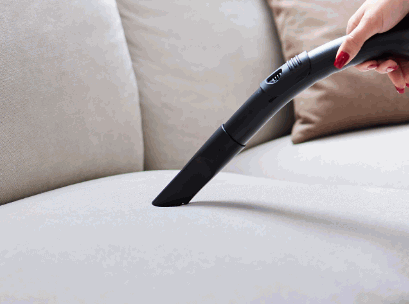
Cleaning a leather chair requires a systematic approach to ensure it is done effectively and safely, using a step-by-step guide that includes vacuuming, applying cleaner, rinsing, and conditioning.
The first step in cleaning a leather chair is to vacuum it thoroughly to remove dust and dirt that may have accumulated on the surface, ensuring that the chair is not only visually appealing but also free from particles that can cause wear over time.
To achieve an effective clean, one should focus on using the appropriate attachments for those hard-to-reach areas. Utilizing a crevice tool attachment allows for the effective removal of debris from the gaps between cushions, which are often hotspots for dust accumulation. Similarly, using a soft brush attachment can help lift dirt from the leather's surface without causing damage. It's important to:
This comprehensive approach not only enhances the chair's appearance but also extends its lifespan.
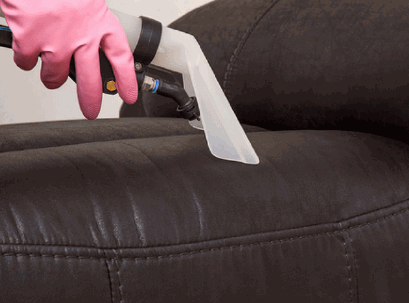
Before applying any cleaner to the entire surface, it's crucial to test it on a small, inconspicuous area to ensure it is safe for the leather fabric.
By selecting a hidden spot, you can avoid any potential damage to the visible areas of your prized possessions. Start by choosing a discreet location, such as the back of a cushion or an area that is typically out of sight. Once the cleaner is applied, observe the area for several minutes and look for specific signs of compatibility, including:
Ultimately, this careful approach will help ensure that the cleaner you choose maintains the integrity and appearance of your leather.
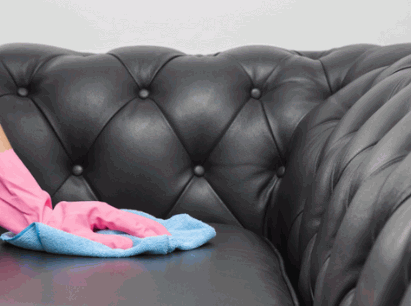
Using a soft cloth, apply the leather cleaner to the chair, gently wiping the surface to remove dirt without causing damage. It’s essential to treat the leather with care to preserve its quality and longevity.
Begin by pouring a small amount of cleaner onto the cloth, ensuring you do not saturate it.
When working on the chair, lightly press the cloth against the leather, employing circular motions to lift away grime. It’s important to cover all areas consistently, focusing on seams and creases where dirt often accumulates.
Once you’ve finished, let the leather air dry naturally without exposure to direct sunlight or heat sources, ensuring that no cleansing residue remains.
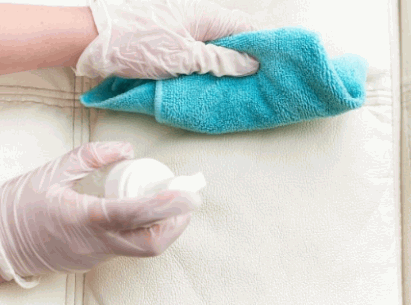
After cleaning with the leather cleaner, it's important to rinse the chair using a damp cloth to remove any residue from the cleaning process.
When performing the rinsing process, utilize a cloth that is merely damp, not soaking wet, to prevent any excess water from seeping into the leather. Excess moisture can cause significant damage, including stains and mold, compromising the integrity and appearance of the leather.
Gently wipe the surface, ensuring that all cleaner residue is thoroughly removed without over-saturating the leather. Once this is done, it’s crucial to take one final step: ensuring that the leather is not left damp afterward. Use a dry cloth to pat down areas if needed, promoting a safe environment for the leather to maintain its luxurious feel.
Remember, proper rinsing is key to prolonging the life of your leather furniture.
Once rinsed, gently dry the chair with a soft cloth, ensuring that excess moisture is removed without damaging the leather.
As you embark on this crucial task, it is essential to follow proper techniques that ensure the longevity of the furniture. Not only should the chair be dried gently, but one must also consider the environmental conditions in which the chair resides.
To effectively manage moisture, keep an eye out for—
These signs can help gauge the effectiveness of your drying process. Avoid dragging objects across the surface to prevent scratches, and utilize a soft-bristled brush for stubborn dirt. With careful attention, it is possible to maintain a beautiful, well-kept leather chair.
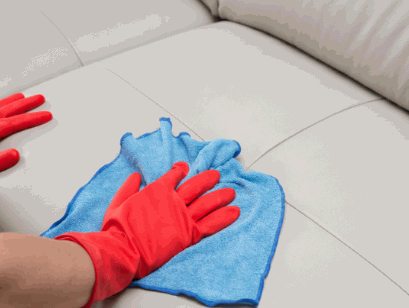
The final step in cleaning your leather chair is to apply a leather conditioner, which helps to maintain its moisturized state and prevent future cracks.
To effectively care for leather, users should choose a high-quality leather conditioner that is compatible with their specific type of leather. It’s essential to apply an adequate amount of the conditioner—typically a small, pea-sized amount is sufficient for each section of the chair.
By following these simple steps, the longevity and beauty of the leather chair can be preserved for years to come.
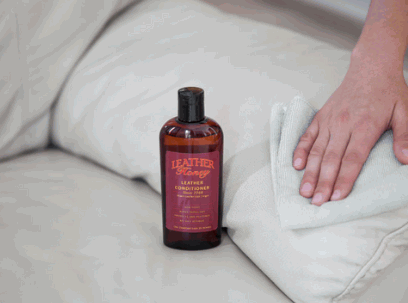
Maintaining a clean leather chair requires consistent effort and practical tips to prevent damage while ensuring it stays in pristine condition over time.
To protect your leather chair, it is essential to wipe spills immediately, preventing stains from setting in.
Taking prompt action not only helps preserve the aesthetic appeal of the furniture but also extends its lifespan. When a spill occurs, grabbing a clean, dry cloth can make a significant difference in the cleanup process. A soft, lint-free microfiber cloth is highly recommended, as it is gentle on the leather and effectively absorbs liquid without leaving fibers behind.
After treating the area, applying a leather conditioner can replenish moisture and protect against future damage. Prioritizing immediate cleanup and using the right products ensures your leather remains beautiful and resilient.

Keeping your leather chair out of direct sunlight and heat sources is crucial to prevent fading and damage. Prolonged exposure can lead to significant deterioration, causing the material to become dry and brittle over time, which not only affects its appearance but also its overall longevity.
To safeguard your leather furniture, consider repositioning it away from windows and vents.
Here are some effective strategies:
Implementing these simple changes can significantly extend the beauty and life of leather furniture, ensuring it remains an elegant centerpiece in your home.
Regularly vacuuming and dusting your leather chair can significantly prolong its life and maintain its appearance.
To achieve optimal results, it is recommended that you vacuum at least once a week. This frequency helps remove any accumulated dust and dirt that can eventually degrade the leather's surface if left unattended. When using a vacuum, be sure to select a soft brush attachment to avoid scratching the leather.
Plus vacuuming, utilizing a microfiber cloth to wipe down your leather chair after vacuuming can help capture any remaining particles and keep the surface smooth.
By following these simple steps, one can ensure that their leather furniture stays pristine and inviting for years to come.
Using a leather protector can provide an extra layer of defense against spills and stains, ensuring your leather chair remains in top condition.
In terms of preserving the beauty and longevity of leather upholstery, understanding the various types of protectors available in the market is essential. Leather protectors come in several forms, including sprays, creams, and wipes, each designed to form a barrier that repels water and chemical stains. It is crucial to select a product that suits the specific type of leather in your chair, as varying compositions can react differently.
To effectively apply these protectors, start by cleaning the leather surface thoroughly and allowing it to dry completely. Test a small, inconspicuous area first to ensure compatibility, and then follow the manufacturer's instructions for optimal results. Regular application of a suitable protector not only maintains the integrity of the leather but also enhances its aesthetic appeal over time.